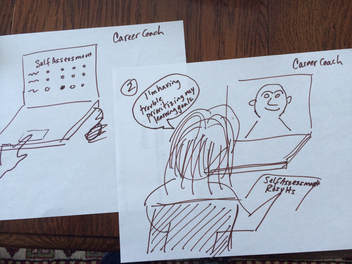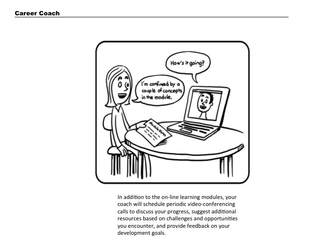Mission: Impact podcast & blog
Build a better world without becoming a martyr to your nonprofit cause
Listen on:
|
Simon Sinek has made the concept of starting with why popular. Through first his TED talk and then his book, he shows how starting with ‘why’ instead of ‘how’ or ‘what’ connects you with your audience more quickly. This concept has wide applicability from the large questions of why you do your work to the more focused one of why you are calling together a group of people for a particular task (otherwise known as a meeting). What’s your goal? In planning a meeting, starting with the why is key. Why am I have this meeting? Why am I bringing this group together? What can this group do together that another could not do? What is my goal and what outcome do I hope to have by having this meeting? Opening and Closing With your goal and intended outcome clear, you can then move to the “what” and the “how.” The ‘what’ will flow from the why. It is helpful to think about another concept. How many ‘what’s’ or agenda items can you reasonably open and bring to closure during the time you have available? Cycle of experience
Taking time for closing Groups often dive into a topic without allowing time for coming to some resolution. This resolution does not necessarily have to be a decision about the issue. It could simply be to outline next steps, such as further study, or delegation to a subgroup to come back with a proposal. You may feel awkward when you interject and pull the group back before someone jumps to another topic. It may feel like it is slowing progress. Yet this pause actually saves time and energy in the long run because you take the time to clearly delineate your next steps. Your brain will thank you too because the majority of the energy your brain expends is in shifting gears. Did you get it in writing? To be most effective, designating someone to capture notes from the discussion and especially on the next steps for each item is key. Without this, too often groups discuss a multitude of topics and walk away without a clear notion of whether there is agreement on how to proceed. This saves on confusion on roles and responsibilities as well as checking for understanding.
You probably already know all this. And it is too easy to miss implementing these simple steps in practice. This meeting planning tool can help put these simple steps into action. Let's talk. I work with teams and organizations to improve their effectiveness, by identifying challenges that impede progress and helping the group create processes that will work for them. Today’s workplace is rampant with badly designed and facilitated meetings. Whether face-to-face or held via conference call or web cam, the badly designed meeting is a waste of everyone’s time. Even worse is the enervating impact it can have on a chunk of your work day afterwards as well you waste time complaining about the boring and pointless meeting with your co-workers. Is there a better way? Meetings can be productive and useful – even invigorating – if they are designed well. A good first move is to step back and consider why you are calling the meeting. Especially for a regular meeting – what is its purpose? Do those who regularly attend the meeting know what the purpose is? Clarify what your goal is for the meeting. An easy what to define your goal is the complete the sentence, “By the end of the meeting, we will have…” And once you define your goal, if you discover that your primary objective is to deliver information, consider other delivery mechanisms such as an email, memo or a video or audio announcement. Why did I get invited to this meeting?Make sure that each person at the meeting can readily answer this question. Given your goal, who needs to be there? Who knows about the topic? Who needs to be consulted or give input? Who will be impacted by what will be discussed? People checking their phones in the middle of your meeting is a good sign that you did not do a good enough job articulating why they needed to be there and what they have to offer. Getting connected Let me state the obvious: your meetings include people. Yet when calling a meeting, people often forget the obvious. How do you help the group get to know each other – beyond a rapid fire round of names and titles? How do you help people get grounded and focused on your topic? A check in at the beginning of the meeting helps people connect to each other and to the task at hand. Some facilitators ask the question, ‘what do you need to put aside to be fully present at this meeting?’ Oh I missed that email Help your meeting participants be prepared to tackle the task at hand. Give them enough time to consider any materials ahead of time. To even the playing field, Jeff Bezos of Amazon sets time at the beginning of the meeting for a period of silence during which everyone reads the preparatory material. This allows those who are behind to catch up and it allows those who have read the material to review it again. Everyone then has it fresh in mind. Timing Given your goals for the meeting, how long will take to achieve each item? Be realistic and allow enough time for the discussion you need. An overstuffed agenda with no space for the conversation you need to have often means the group often leaves the meeting with multiple loose ends. Then it will end up having to circle back to the item again. You don’t have to do everything yourself If you are facilitating the meeting, involve others in the meeting to play useful roles, such as a time-keeper and note-taker. If your meeting will involve splitting into small groups, ask each group to self-select people to play those three key roles. What’s next? Allow enough time to open, consider options and close each item during the space of the meeting. Leave time at the end to wrap up, review what was decided and what the next steps are. Do this out loud, to check for agreement, and then in writing – on a whiteboard or using a project management system or a simple email follow up with next steps and assignments.
Download the meetings worksheet to plan a better meeting. Let's talk. I work with teams and organizations to improve their effectiveness, by identifying challenges that impede progress and helping the group create processes that will work for them. Iteration Iteration You have probably heard that word a lot recently. Whether you are talking about adaptive management, design thinking or lean start up, each approach involves iteration and experimentation. Creating a prototype – something much simpler and less expensive than a pilot project – is easy to imagine when you are talking about a tangible product. But what about a program or service your nonprofit or association plans to deliver? How can you create a low cost prototype of that to get in front of your customers/members/audience? Blah, Blah, Blah Nonprofits and association staff often rely on describing their program – whether to their board or in a grant application – through words. It is then up to the listener/reader to imagine what they are talking about. And usually the focus was on convincing those with money to support this new venture. If the pitch is successful, the program is then funded, usually as a pilot program is developed over a few years. 4 flaws to this approach This approach has multiple flaws that are easily addressed.
What is a storyboard? Movies, videos, TV shows are all story boarded before filming starts. The storyboard is a sequence of drawings that show how the shots will progress. For a program you have imagined, you draw the steps in the storyboard that a program participant would take as they complete your program. Think of it as the comic book version of the program you want to create. But I can’t draw  When I worked with the design teams a number of team members were reluctant when we got to this set because they said they couldn’t draw. I reminded them that this wasn’t the purpose – we were not looking for artistic ability. Just clear enough stick figures to show what would happen as part of the program. Here is an example of piece of one of our first draft storyboards. No awards to artistic merit here! We then worked with a professional illustrator to create clearer versions to put in front of our audience. Benefits of the storyboard
Let’s talk. I work with associations and nonprofits to help them lower the risk out of launching new program and service development initiatives by coaching them on using human centered design innovation approaches and tools. |
Categories
All
Archives
July 2024

Grace Social Sector Consulting, LLC, owns the copyright in and to all content in and transcripts of the Mission: Impact podcast, as well as the Mission: Impact blog with all rights reserved, including right of publicity.
|
Telephone301-857-9335
|
info[at]gracesocialsector.com
|
Grace Social Sector Consulting, LLC, owns the copyright in and to all content in, including transcripts and audio of the Mission: Impact podcast and all content on this website, with all rights reserved, including right of publicity.
|